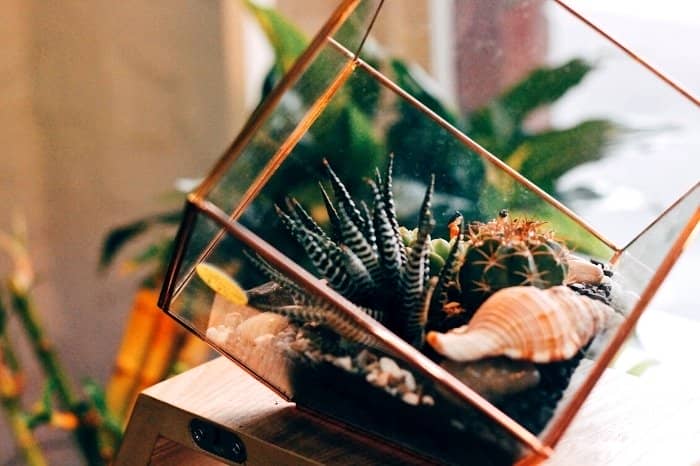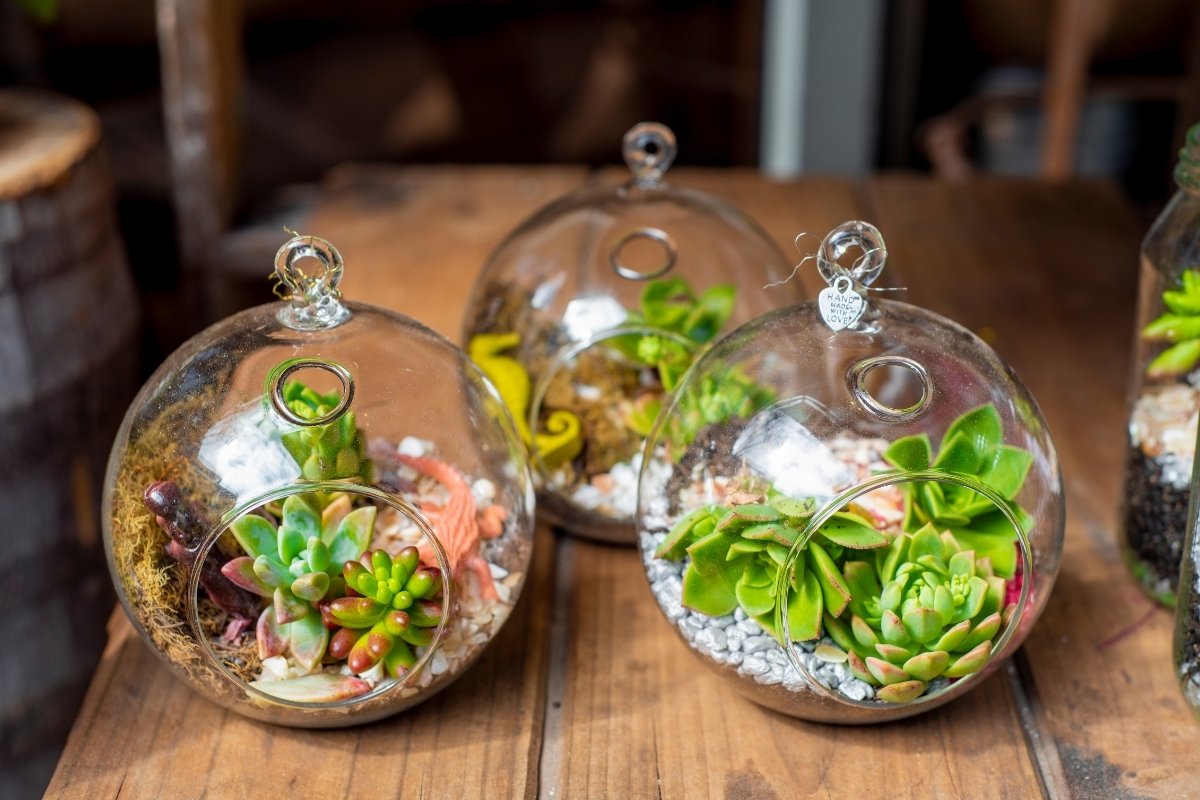The Best Soil for Closed Terrariums, like any indoor garden plant, is a mixture of organic components and an inorganic medium. The type of soil you use depends on the plants you are growing, but it should be composted and loose enough to drain water easily while still retaining moisture.
If you want to bring the beauty of nature indoors, why not opt for terrariums? However, without proper care, they can quickly turn into moldy disasters. Do you want to grow the best plants possible in your terrarium? This article will help you select the best soil for your plants. Closed terrariums are a great way to create your own miniature, self-contained ecosystem.
To keep the plants healthy and happy, you need to use a specific potting mix that provides optimum drainage and moisture retention properties. Cacti and other succulents can be beautiful additions to your home. If you have a compact space and are not able to put them out into the garden, then providing artificial light, soil and water is the best way to care for them. Have a look below to learn more!
Potting Soil For Terrariums
Terrariums are a perfect solution if you don’t have a lot of time to care for your plants. They come in all shapes and sizes, with the most popular ones being small enough to fit on a windowsill. To be successful, you will need to choose the right potting soil. You can opt to buy them from the varieties available online or use our preferred soil mix.
Either way, the best soil for closed terrariums is recommended for both indoor and outdoor use. Natural or forest soil, both of which are fine-grained and easy to dig around, is best. Keep in mind that potting soil is a critical component for any terrarium as it provides a protective cocoon that keeps your plants safe.
Closed terrariums are one of the most popular ways to grow houseplants and succulents. They require a very specific potting soil that is not only organic but also well-draining. We recommend following our recipe below to make your own potting mix at home.
Potting Mix Recipe – Best Soil For Closed Terrariums
Equal parts coco-coir
Equal parts peat moss
Equal parts sand
One part gravel
One part charcoal
One part perlite
Two parts potting soil
Method
To start, combine the perlite, gravel, and charcoal to use at the base of the plant pot. The rest of the ingredients should be incorporated together using a little water before planting. Keep in mind that if the soil mix is up to par, then maintenance demands would be much lesser as terrariums are efficient at supporting plants in their environment.
What Is The Purpose Of Sand In A Terrarium
Sand is an essential component of a closed terrarium. It helps efficiently hold moisture and provides proper drainage. We love learning about the science of things, so when we were invited to a terrarium workshop with an expert, we couldn’t resist! At first, we thought the sand had just been added for decoration, but it turns out that’s not the case at all.
A terrarium with sand and soil is excellent for many reasons. It helps with drainage, provides an element of variation for plants, and allows for proper aeration. The best type to use is coarse or large-grained sand. Coarse-grained holds more moisture than fine-grained sand and doesn’t need to be replaced as often.
In a house or apartment, there are many different ways to keep plants alive, but sometimes living plants become too much of a responsibility. That’s why these enclosed environments are so popular, as they require little maintenance and will provide you with years of enjoyment. Using the best soil for closed terrariums will ensure that your plants thrive.
Mosser Lee ML1110 Desert Sand Soil Cover, 5 Pound
How To Plant A Closed Terrarium
Terrariums are a great way to start a garden indoors. They’re low-maintenance and a much more convenient and cheaper option. Creating a beautiful container garden with minimal effort and mess has never been easier.
Choose a favorite container or an old jar and start planning what you want to include in your terrarium. From succulents to cacti and beyond, the right steps are essential for the health of your plants. Below we’ll cover a few points that can be used to plant and give you a list of plants that will work best for your cocooned garden.
Closed Terrarium Plants
- Peacock fern plants
- Button ferns
- Aluminum plant
- Fig plants
- Aquamarine plants
- Dwarf vines
- Radiator plant
- Ruffled fern plants
- Silver ribbon fern
Planting Tips
- To begin, ensure that you have all the materials needed. These include your plant, a container or bottle, soil, rocks, charcoal, and water.
- Then, place the rocks and charcoal at the bottom of the container. This will aid in drainage.
- After that, you can place your plant on top.
- Now, you can add the soil and lightly pat it in.
- You can also opt to add rocks on top as decoration for your terrarium.
Planter. - Lastly, water your plant and watch your ecosystem flourish.
Take Out Time to Also Read:
- The Best Soil For Camellias – A Growers Guide To Glossy Foliage And Bright Blooms!
- The Best Potting Soil For Pothos – A Guide To Growing Evergreen Vines
Terrarium Plant Care Tips
Terrariums are perhaps the most straightforward houseplant system to care for because they require little maintenance and only enough water to keep the soil damp. However, there are a few steps that must be taken to ensure your plant’s success in its intended environment. Follow these simple plant care tips to have a thriving indoor garden that you can be proud of!
Tips – Best Soil For Closed Terrariums
– There are a few things you need to take into consideration. Along with your plant’s specific needs, what type of environment it lives in should be prioritized. This will determine whether or not you should choose a more well-draining mix or a more moisture-retentive one.
– It is best to look for a potting mix that is fine textured, lightweight and drains well. It is recommended to avoid using soil from your yard or garden as it is often too heavy or has a high clay content, which creates an environment ideal for mold and mildew growth.

– To keep your plant moist, regular watering is essential. Most terrarium plants do well with weekly waterings after they’re established. It is best to spray your plant for even moisture distribution.
– To create a natural habitat, adding decorative features will enhance the look and feel of your ecosystem. Pebbles, stones, sand, aquarium rocks, and miniatures figures would suit your planter well.
Conclusion – Best Soil For Closed Terrariums
A terrarium is basically an enclosed ecosystem. It houses plants that are naturally found in their specific climate and region to create small native environments. Fortunately, the effort and cost of caring for a terrarium are minimal compared with their benefits to indoor air quality, especially in single-leaf or closed environments.
The best soil for closed terrariums is a good mix of light and heavy soil. It should be light enough to allow airflow but heavy enough to retain water. The combination will ensure proper watering, which is crucial in closed systems because there will be no evaporation.
Keep in mind that lightweight materials like perlite and vermiculite allow moisture to pass through easily while still offering aeration with pockets found in sand or bark. These plant features are a great way to add life to your home and enhance your indoor setting.


